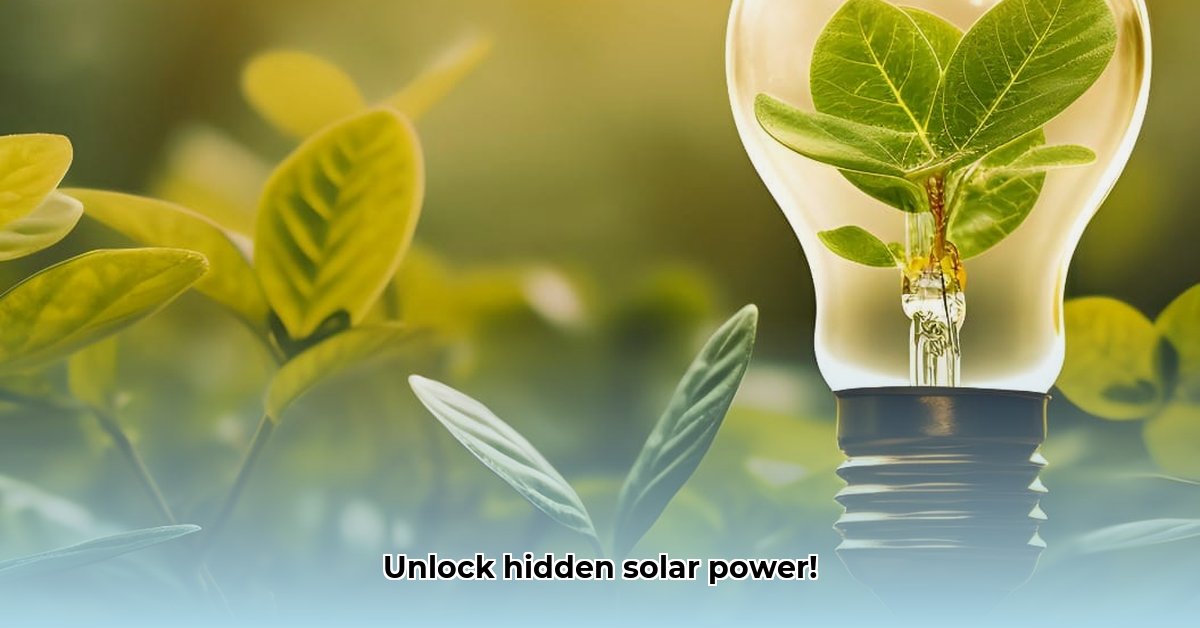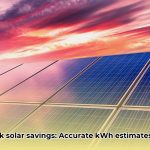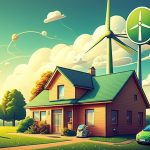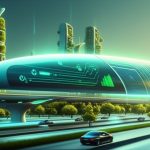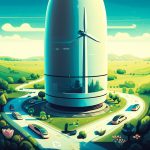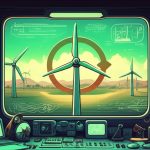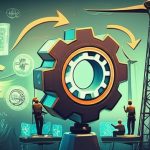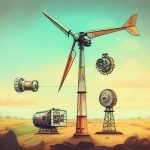Ever wonder what really happens after sunlight hits your solar panels? It’s more than just magic! This article breaks down the whole process – from sunshine to your lights – in simple terms. We’ll cover all the parts of a solar energy system, showing you how to get the most out of it and avoid common problems. Whether you’re a homeowner thinking about going solar or just curious about how it all works, this guide will give you the knowledge to make informed decisions and maximize your solar power. Let’s dive in and unlock the secrets to harnessing the sun’s energy efficiently! For more advanced solar technology information, check out this resource.
Energy Chain for a Solar Panel: Unlocking Maximum Efficiency and Power Output
Let’s talk solar power – specifically, how your solar panels actually work to bring you clean energy. It’s more than just sticking panels on your roof; it’s about understanding the whole process, from sunshine to powering your home. This guide breaks down the energy chain for solar panels, helping you maximize your system’s potential and improve long-term performance.
From Sunlight to Direct Current (DC) Electricity: The PV Cell Magic Explained
The journey starts with the sun! Sunlight hits your solar panels, which are packed with photovoltaic (PV) cells (specialized semiconductors that convert light into electricity). These cells, usually made of silicon, are the heart of the operation. They’re like tiny electricity factories, converting sunlight directly into direct current (DC) electricity. Now, this conversion isn’t 100% efficient. Think of it like this: some sunlight gets lost due to things like clouds, the angle of the panels, even the temperature. Getting the most energy means carefully considering where your panels are placed to soak up the maximum amount of sun throughout the day and reduce conversion loss.
To maximize the sunlight captured, consider these factors:
- Orientation: In the Northern Hemisphere, a south-facing roof is optimal.
- Tilt Angle: The ideal tilt angle matches your latitude.
- Shading: Minimize shading from trees and nearby buildings.
The Great Conversion: Direct Current (DC) to Alternating Current (AC) Simplified
Your toaster, your phone charger, your entire home… they all need alternating current (AC) electricity. The DC electricity created by the solar panels isn’t what your appliances use. That’s where the inverter steps in – it’s the crucial translator in this whole process. It changes the DC electricity from your panels into the AC electricity your home needs. Picking an efficient inverter is essential; a better inverter means less energy wasted, and more power for you! Selecting an optimal inverter boosts overall grid connection and power system usage.
Different types of inverters include:
- String Inverters: Cost-effective but can be affected by shading on one panel.
- Microinverters: Attached to each panel, maximizing individual panel output and allowing independent operation.
- Power Optimizers: Work with string inverters to optimize each panel’s output.
Storing Up the Sun: The Role of Batteries in Solar Systems
Adding batteries to your solar setup increases efficiency big time. Imagine sunny days when your panels are producing more electricity than you’re using. Batteries store this extra energy, ready to supply power during cloudy days or evenings when the sun’s gone down. This makes you less reliant on the grid. But, the battery technology scene is constantly changing. New types of batteries are constantly emerging. It’s worth doing your homework to find the best storage solutions for your specific needs and budget and manage power distribution effectively.
Common battery types for solar storage include:
- Lithium-ion: High energy density, long lifespan, but more expensive.
- Lead-acid: Lower cost but shorter lifespan and lower energy density.
- Flow Batteries: Emerging technology with potentially long lifespans and high scalability.
Factors to consider when choosing batteries:
- Capacity: How much energy can the battery store?
- Depth of Discharge (DoD): How much of the battery’s capacity can be used without damaging it?
- Lifespan: How many charge/discharge cycles can the battery handle?
Powering Your Home and Grid Connection: Distribution Explained
Once your power is created (and potentially stored in batteries), it’s sent to your home or business. Proper wiring and a well-designed system are crucial for minimizing energy loss along the way. If you’re connected to the power grid (most people are), any extra solar energy your system generates can be sent back to the grid, potentially earning you credits on your electricity bill. This interaction with the grid is a key part of the system, impacting efficiency and overall energy use. It is advisable to consult with a solar professional such as an electrical engineer to ensure proper wiring and system design to minimize energy loss.
Two common grid connection methods are:
- Net Metering: You receive credit for excess energy sent back to the grid, offsetting your electricity bill.
- Feed-in Tariff: You are paid a specific rate for each kilowatt-hour (kWh) of energy sent back to the grid.
Optimizing Your Solar Power System: Practical Tips for Boosting Efficiency and Performance
Here’s how to make your solar energy system work as well as possible:
-
Panel Placement is Key: Carefully planning where your panels go is vital for capturing the most sunlight. A south-facing roof (in the Northern Hemisphere) with minimal shading is ideal. Consult a solar professional; they can analyze your property for the best spot and can help you reduce environmental shading for better results.
-
Inverter Matters: Choose an inverter that matches your solar panel’s output. Don’t go too small – you’ll limit your energy production. Also, higher efficiency inverters waste less energy during the conversion process.
-
Consider Battery Storage: Adding batteries can significantly increase your self-sufficiency and reduce your reliance on the power grid. This is particularly helpful if you have frequent power outages or high electricity costs.
-
Keep it Clean & Checked: Regularly clean your panels to keep them free of dirt, leaves and bird droppings. This prevents energy loss due to reduced sunlight absorption. Regular inspections and maintenance contribute to the longevity and performance of your system. A study by the National Renewable Energy Laboratory [1] found that regular cleaning can improve energy production by up to 25%.
-
Smart Monitoring for Peace of Mind: Install a smart monitoring system to keep an eye on your energy production, consumption, and identify any potential issues early. These systems often provide valuable insights and data to help you optimize your solar setup.
Here are some additional tips for system optimization:
- Regularly inspect wiring and connections: Ensure all connections are tight and free of corrosion.
- Monitor panel performance: Look for signs of degradation or damage.
- Consider professional maintenance: Schedule regular checkups with a qualified solar installer.
What the Future Holds for Solar Energy Technologies
The solar energy industry changes fast. Researchers are constantly developing new technologies to make panels more efficient and cheaper. We are also seeing advancements in smart technology and energy storage systems, paving the way for a more sustainable energy future and an enhanced grid connection. The energy chain for solar panels will adapt and improve accordingly. Keeping up with the latest innovations is essential for getting the most from any solar installation.
Emerging solar technologies include:
- Perovskite Solar Cells: Offer potentially higher efficiency and lower manufacturing costs.
- Bifacial Solar Panels: Generate electricity from both sides of the panel, increasing energy yield.
- Transparent Solar Panels: Can be integrated into windows and other surfaces.
Looking Beyond the Technology: A Sustainable Choice for Future Generations
Remember, your solar panel system is more than just wires and cells; it’s part of a bigger picture – a move toward a cleaner and more sustainable energy future. By understanding how your system operates and taking steps to optimize it, you’re doing your part to create a greener way of life. Let’s harness the power of the sun, together and create a greener way of life.
Environmental Benefits:
- Reduced carbon emissions
- Decreased reliance on fossil fuels
- Cleaner air and water
Economic Benefits:
- Lower electricity bills
- Increased property value
- Job creation in the renewable energy sector
How to Optimize Solar Panel Energy Storage for Maximum Efficiency and Power System Performance
Solar power is booming, but maximizing its potential hinges on efficient energy storage. Let’s dive into strategies to get the most from your solar panel system and how to optimize solar panel energy storage for maximum efficiency.
Understanding the Energy Chain and Power Distribution
Think of your solar setup as a carefully orchestrated dance. Sunlight hits the panels, generating electricity. This power flows through an inverter, converting it to usable AC current. Then, it either fuels your home directly or heads to your battery storage system and, if available, back into the grid. This entire process—from sun to usable energy—is your energy chain. Optimizing it means maximizing your energy output and minimizing losses at each stage.
Here’s a breakdown of the key components:
- Solar Panels: Convert sunlight into DC electricity.
- Inverter: Converts DC electricity to AC electricity.
- Battery Storage: Stores excess energy for later use.
- Grid Connection: Allows you to send excess energy back to the grid.
Panel Placement and Orientation for Maximum Sun Exposure
Where you place your panels drastically impacts their performance. South-facing (Northern Hemisphere) panels, angled optimally for
- Wind Turbine Generator Kit For Home: Is One Right For You? - November 2, 2025
- Wind Turbine Fire: Questions About Safety Spark Debate - October 31, 2025
- Vertical Axis Wind Turbine Design: Improving Efficiency and Overcoming Limits - October 29, 2025
